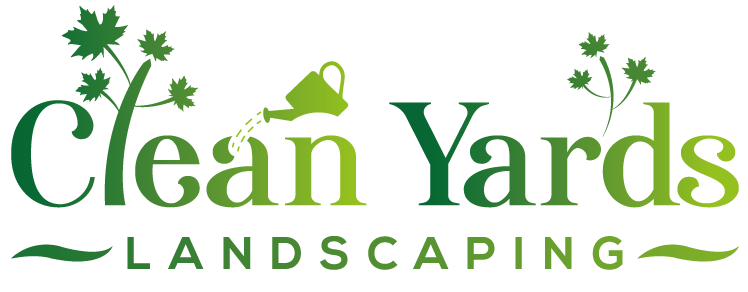Why Kenmore Homes Need Native Plants: Save Water & Work
Quick Takeaways:
- Native plants are adapted to Kenmore's climate & soil, requiring less water and maintenance.
- Their deep roots make them drought-tolerant, reducing reliance on sprinklers.
- They need less fertilizer and pest control compared to non-natives.
- Native plants support local pollinators and wildlife, boosting biodiversity.
- Choosing natives creates beautiful, resilient gardens that save you time and effort.
Ready to ditch the endless garden chores? Create a beautiful, low-maintenance landscape that thrives in Kenmore's climate. Native plants are the key!
Introduction: Hey Kenmore! Ready for a Gorgeous Garden That Works *Less*?
Hey there, Kenmore neighbours! Dreaming of a beautiful garden space but maybe not so keen on the endless watering and weeding that often comes with it? We totally get it. Here in the Ottawa area, our weather likes to keep us on our toes – one minute sunny, the next… well, you know! That can make traditional gardening feel like a bit of a workout, demanding precious time and lots of water, especially during those hot, dry spells. Check out City of Ottawa Water Conservation tips for more info on water use.
But what if your landscaping could be *easier*? Imagine stepping out into a stunning yard that thrives with less fuss and uses less water. Sounds pretty good, right? The secret lies in embracing plants that are already perfectly suited to our local conditions: *native plants*! These are the true local heroes, born and bred to handle Kenmore's specific climate and soil like champs. You can see some amazing yard transformations using the right plants.
This article is all about diving into *why* choosing native plants for your gardening projects is such a brilliant idea. We’ll show you how these amazing plants can help you create a beautiful, low-maintenance, and water-smart garden right here in your Kenmore backyard. Let's get ready to enjoy your garden more and work on it less!
What Are Native Plants, Anyway? Ottawa's Original Inhabitants
Okay, let's dive in! You hear the term "native plants" thrown around in gardening circles, but what does it actually *mean*, especially for us here in the Ottawa region? Thinking about getting started? Maybe our about us page can show our passion.
Think of native plants as the original residents, the true locals of our area. These are the trees, shrubs, wildflowers, and grasses that were growing happily here long before European settlers arrived, even before Ottawa was Ottawa! They've been adapting to our specific neck of the woods for thousands of years. They basically *invented* thriving in Kenmore.
What does that adaptation mean for your garden? A whole lot! Native plants are naturally suited to our climate – they shrug off our chilly Zone 5a/b winters and know how to handle our sometimes-scorching, sometimes-soggy summers. This natural resilience is a huge plus if you want to prevent summer garden loss due to harsh conditions. They've evolved alongside our local soil types, too. Whether you're dealing with the sandy stretches you might find near Greely or the heavier clay soil common in parts of Nepean, there are native plants that feel right at home. This adaptability often means less soil fuss for you, unlike some fussier plants or even lawns that might need careful feeding routines like those discussed in this Kenmore lawn care spring fertilizing guide. Ensuring proper soil preparation initially can still give them the best start.
Choosing native shrubs, for example, can be a smart move. Because they're already hardened to our winters and familiar with tricky soils, exploring Kenmore shrub care for winter kill and clay soil challenges might become less of a worry when natives are involved. They just *get* it here.
Contrast this with non-native plants. Many are perfectly fine garden additions (hello, tomatoes!). But some non-natives can become *invasive*, acting like bullies that push out our local species and disrupt the ecosystem. Native plants, on the other hand, play nice with local wildlife and contribute to a healthy environment. They're the ultimate team players for a sustainable landscape, fitting beautifully around features like ponds or streams, perhaps even complementing some Kenmore small yard water feature ideas.
So, in short: native plants are the low-maintenance, water-smart, eco-friendly superstars perfectly designed for Ottawa-area gardens. Incorporating them is a fantastic way to create beautiful, resilient landscaping. If you need help selecting or planting natives, remember professional landscaping services can guide you to the perfect choices for your specific yard.
Deep Roots, Less Watering
Native plants typically have much deeper root systems than traditional lawn grasses or many non-native ornamentals. This allows them to access water deeper in the soil, making them naturally more drought-tolerant and reducing your need to water frequently, especially during Ottawa's dry spells.
Adapted Means Easier Care
Because they evolved here, native plants are naturally resistant to common local pests and diseases and are adapted to our soil conditions. This means less need for fertilizers, pesticides, and soil amendments, saving you time, effort, and money on maintenance. A well-planned garden maintenance schedule becomes much simpler.
Wildlife Haven
Native plants provide essential food (nectar, pollen, seeds, berries) and habitat for local pollinators like bees and butterflies, as well as birds and beneficial insects. Planting natives helps support biodiversity and creates a healthier ecosystem right in your backyard. Learn more about local ecosystems from the Rideau Valley Conservation Authority.
Unlock the 'Save Water' Superpower: Native Plants vs. Thirsty Lawns
Okay, let's talk about turning your garden into a water-saving champion! We all know those Ottawa summers – sometimes beautiful, sometimes downright scorching and dry. During those heatwaves, keeping a traditional lawn lush and green can feel like a part-time job, constantly moving the sprinkler and watching your water bill creep up. It's like your lawn has a secret pact with the water company! But what if there was a way to have a gorgeous yard *without* the constant thirst? Enter native plants, the superheroes of water conservation in your garden.
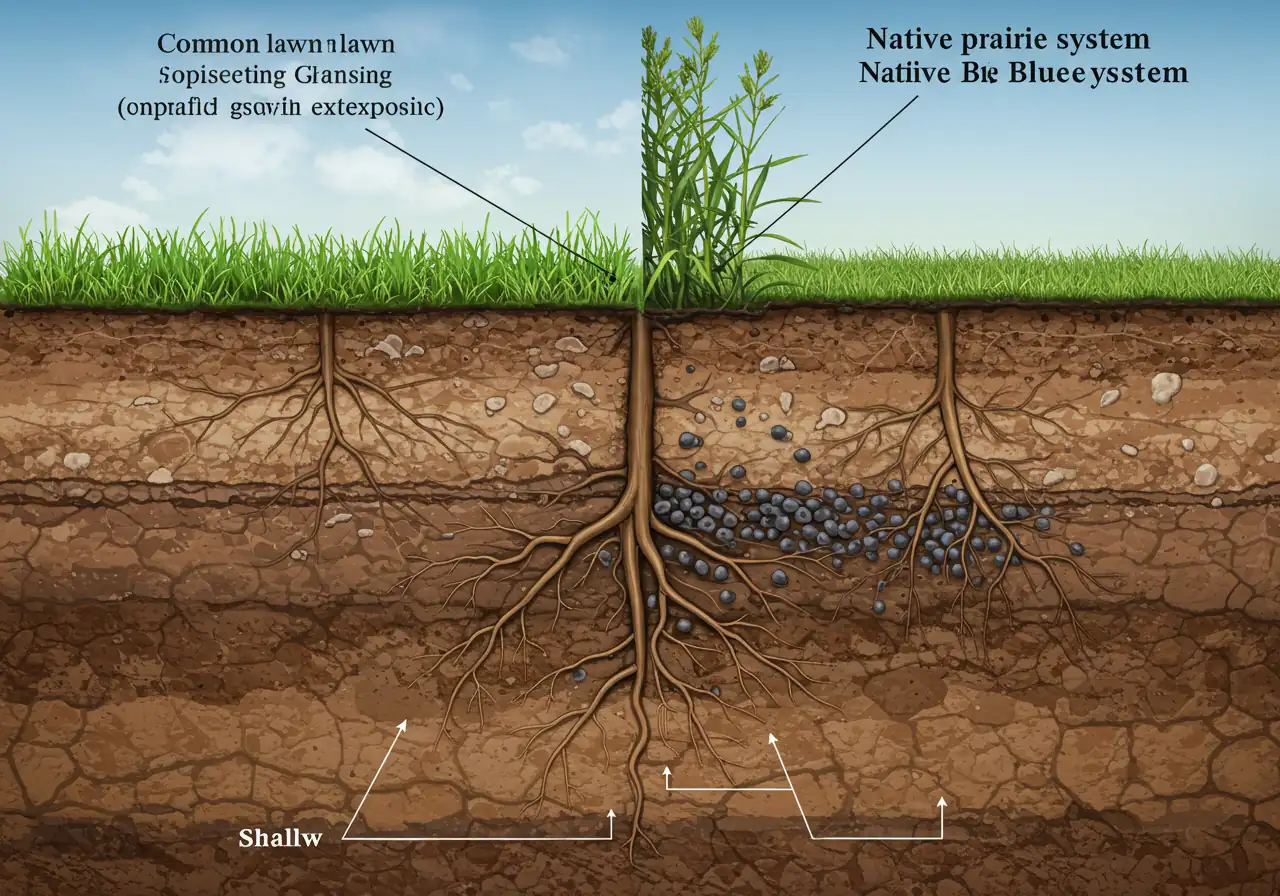
The Secret Weapon: Deep Roots and Local Smarts
So, how exactly do native plants pull off this water-saving magic? It's all thanks to their brilliant design, perfected over centuries right here in places like Kenmore and nearby areas like Metcalfe or Osgoode.
- Deep Divers: Unlike many typical lawn grasses with shallow roots that barely scratch the surface, native plants often develop *deep* root systems. Think of them like built-in straws reaching way down into the soil to find moisture, even when the top layer is dry. This means they're much less dependent on you and your hose!
- Drought Dodgers: Having grown up in Ottawa's climate, native plants are naturally adapted to our rainfall patterns. They know how to handle periods with less water – they've been doing it forever! They won't wilt dramatically the second the sun comes out after a short dry spell, unlike some more delicate, non-native ornamentals.
Estimated Water Needs: Natives vs. Lawn
(Illustrative comparison - actual water needs vary)
The Thirsty Lawn Dilemma
Let's be honest, that perfect green carpet of lawn demands *a lot* of water, especially during July and August heatwaves. Lawns are notoriously thirsty and inefficient water users. Much of the water from sprinklers evaporates before it even sinks in, especially on sunny, windy days. Add potential summer water restrictions from the city, and keeping that lawn green becomes even trickier and potentially more expensive. Choosing native plants helps reduce that strain on our municipal water supply – a win for your wallet and the environment! Considering sod installation? Factor in the long-term watering commitment.
Making the Switch: Small Steps, Big Impact
You don't need to rip out your entire lawn overnight! Start small.
- Replace a Patch: Consider converting a section of your lawn, maybe a tricky-to-mow slope or a sunbaked corner, into a native wildflower or grass bed. This reduces your watering zone instantly. Getting rid of old turf and preparing the area might be part of a larger property clean up project.
- Choose Wisely: Opt for drought-tolerant natives like Purple Coneflower, Black-Eyed Susan, Little Bluestem grass, or Wild Bergamot. They provide beautiful colour and texture with minimal watering needs once established. Need ideas? Consult resources like the Master Gardeners of Ottawa-Carleton.
- Garden Bed Makeover: Swap out water-hungry annuals or shrubs in your existing garden beds with native alternatives. Professional garden maintenance can help with the transition and ongoing care as your new plants get settled.
Transforming parts of your yard to be more water-wise is a fantastic investment. If you're in Kenmore and thinking about a bigger change, like removing significant lawn areas or old landscaping features, looking into a dedicated Kenmore yard cleanup service can help clear the way for your water-saving oasis. Explore the range of landscaping services available to help design and install your native plant paradise. And remember, before starting any major landscaping project, it's always wise to review the terms and conditions of any service agreement so everyone is on the same page. By choosing native plants, you unlock that 'Save Water' superpower, creating a beautiful, resilient garden that works *with* our Ottawa climate, not against it.
Less Work, More Weekends: The Low-Maintenance Magic of Natives
Okay, let's be real. Who *really* wants to spend every sunny weekend battling weeds, mixing fertilizers, or constantly pruning fussy shrubs? We love a beautiful garden, but wouldn't it be nice if it didn't feel like a second job? Good news! Choosing native plants for your Ottawa landscape is like finding a cheat code for less work and more relaxation. It's the low-maintenance magic we've all been dreaming of!
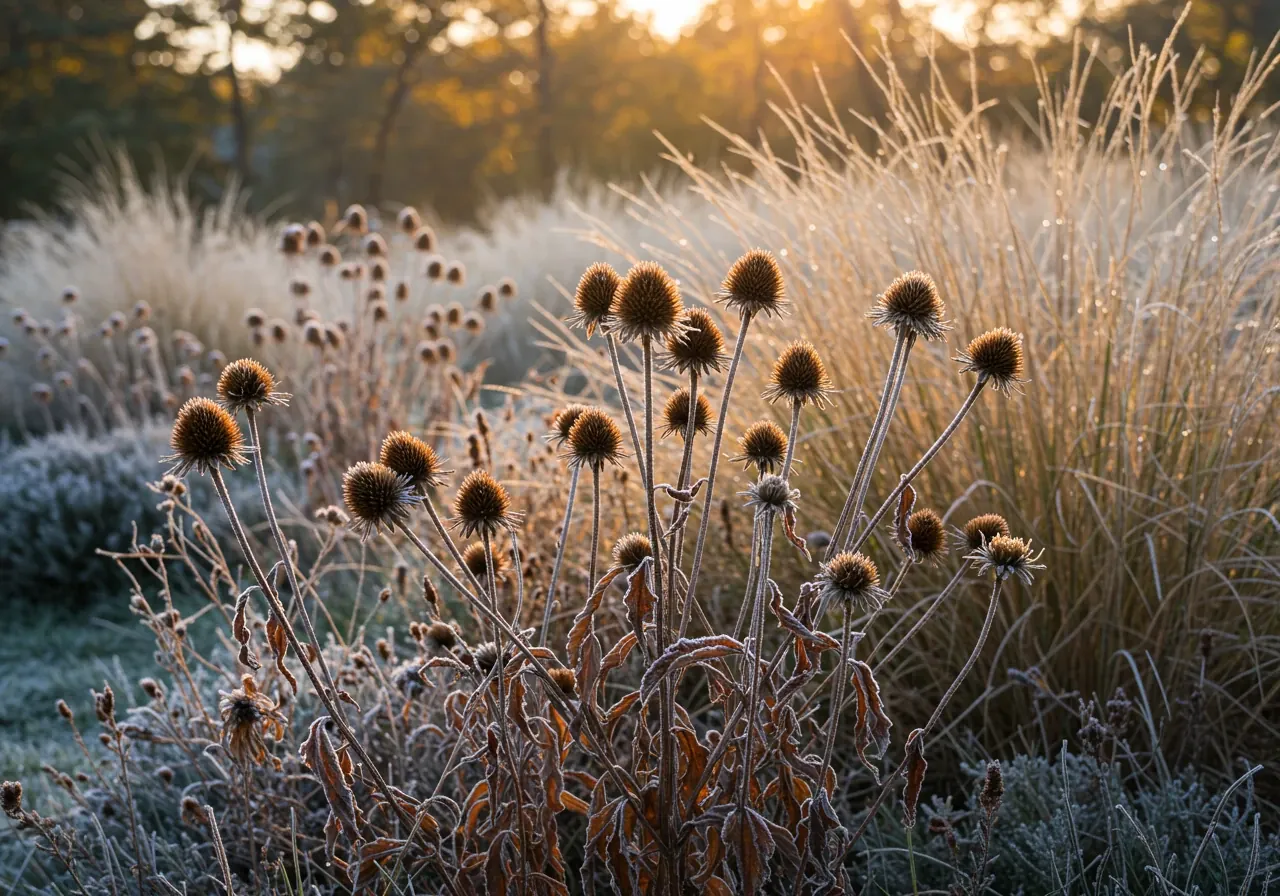
Why Natives Let You Kick Back More:
Think about it: native plants grew up here. They didn't just move to Barrhaven yesterday; they've been thriving in our local conditions for centuries. This built-in resilience translates directly into less work for you:
- Bye-Bye, Constant Fertilizing: Most native plants are perfectly happy with the soil we naturally have around Ottawa. Unlike some exotic imports or nutrient-hungry lawns that might need constant feeding schedules, natives generally fend for themselves. They've adapted to our soil's quirks. While good initial Soil Preparation is always a smart move when starting *any* garden bed to give plants their best shot, you likely won't need bags and bags of special fertilizer year after year for natives. More money in your pocket, less chemistry homework!
- Peace Out, Pests (Mostly!): Because native plants evolved alongside local insects and diseases, they often have natural defenses. They're less likely to be wiped out by common garden pests or ailments that plague non-native species. This means you can drastically reduce, or often eliminate, the need for chemical pesticides and fungicides. It's healthier for your family, pets, local wildlife, and your weekend schedule!
- Less Snipping, More Sipping: While *all* plants benefit from a little tidying now and then, many native species require significantly less pruning than their high-maintenance cousins. Forget complicated shaping or constant deadheading just to keep things looking decent. Many natives have beautiful natural forms and only need occasional attention. Professional mulching and edging can keep beds looking sharp with minimal plant pruning.
A Simple Seasonal Plan (The Lazy Gardener's Dream):
Caring for a native plant garden through Ottawa's seasons is refreshingly straightforward:
- Spring: A light cleanup is usually all that's needed. Maybe trim back any dead stems left standing over winter (leaving them up provides winter shelter for beneficial insects!). Check for any winter damage, but natives are typically tough. A spring Ottawa garden clean up service can handle this easily.
- Summer: Once established (usually after the first year or so), watering needs are minimal compared to traditional gardens or lawns. You'll mostly be enjoying the blooms and watching the pollinators visit! Weeding might still be needed occasionally, but healthy native plantings can often outcompete weeds.
- Fall: Resist the urge to tidy *too* much! Leave seed heads on flowers like Coneeflowers or Black-Eyed Susans for birds to feast on over winter. Let leaves fall in the garden beds to act as natural mulch. It’s nature’s way of recycling!
- Winter: Relax. Native plants are built for Ottawa winters. No need for wrapping them in burlap like fragile sculptures.
Timeline to a Low-Maintenance Native Garden
Year 1: Sleep
Focus on planting and establishment. Water regularly as roots grow deep. Plants may look small above ground.
Year 2: Creep
Plants start spreading and filling out. Water needs decrease significantly. You'll see more growth and blooms.
Year 3+: Leap!
Mature plants reach full size. Minimal watering needed. Enjoy a thriving, low-maintenance garden with less work!
The Real Prize: Your Weekends Back!
Ultimately, the low-maintenance magic of native plants translates into *time*. Time you're not spending wrestling with a sprayer, hauling fertilizer bags, or performing plant surgery. Time you can spend actually *enjoying* your beautiful yard, maybe having that barbecue, reading a book, or exploring nearby Manotick. Check out our Google My Business page for reviews!
Swapping out even a section of demanding lawn (requiring constant care often associated with Sod Installation upkeep) for a bed of resilient natives can significantly cut down your chore list. Getting started is easier than you think, and if you want help setting up your low-effort paradise, professional Garden Install services can handle the heavy lifting. Just imagine: a gorgeous, eco-friendly garden that practically takes care of itself. Now *that's* a landscape worth having! And remember, whenever engaging services, it's wise to review the company's Terms and Conditions beforehand.
Beyond Your Backyard: How Natives Boost Ottawa's Environment
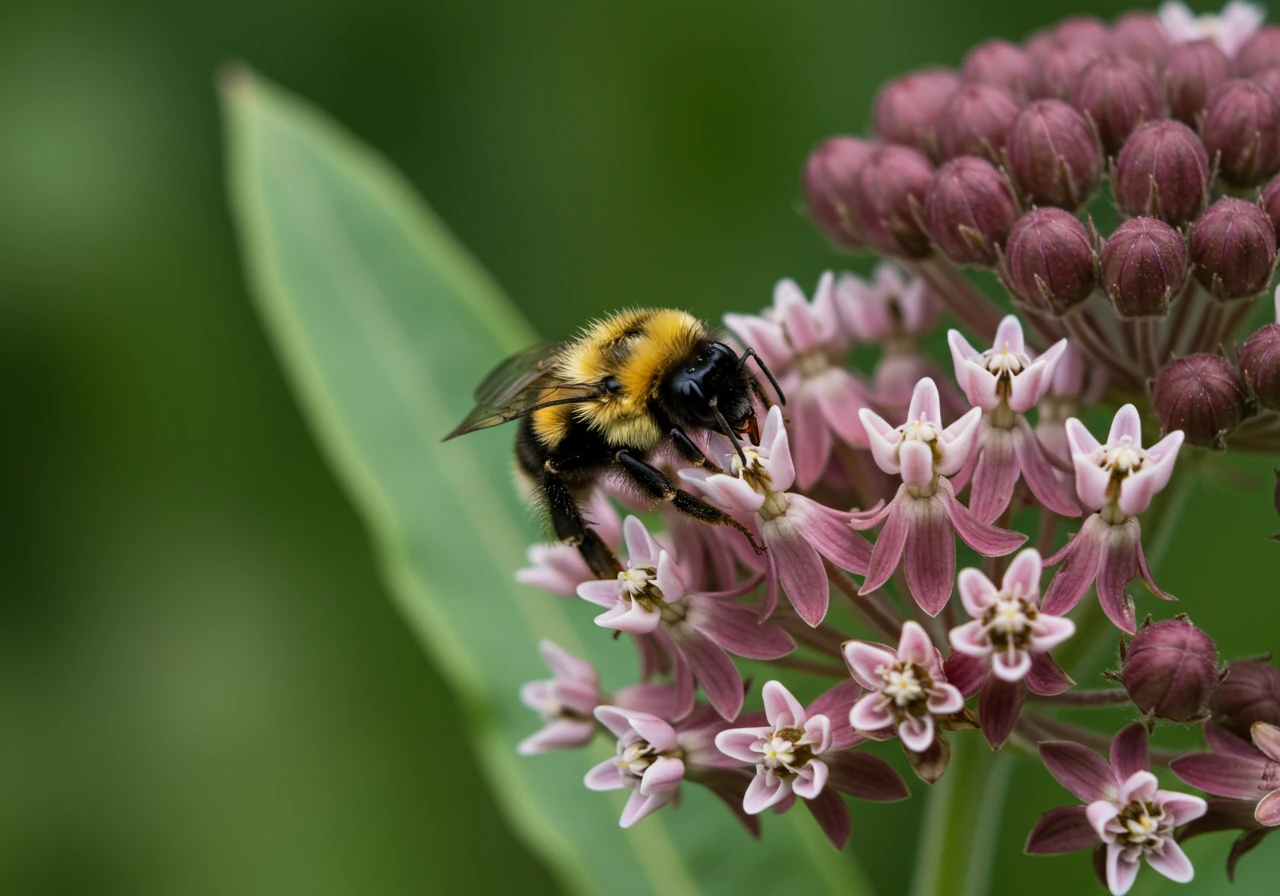
So, we've chatted about how native plants can save you water and weekend chores right in your own Kenmore yard. Awesome perks, right? But the benefits of going native ripple out *way* beyond your property line, helping make Ottawa a healthier, more vibrant place for everyone – critters included! Think of your garden as a crucial puzzle piece in our local ecosystem.
Creating a Wildlife Welcome Mat
Native plants are basically the original hosts of Ottawa's wildlife party! They've evolved alongside our local birds, bees, butterflies, and beneficial insects for thousands of years, providing exactly what these creatures need to thrive.
- Food Glorious Food: Native flowers offer the specific nectar and pollen our local pollinators evolved to eat. Think of Milkweed for Monarch butterflies – it's their *only* caterpillar food source! Berry-producing shrubs like Serviceberry feed birds through the winter, while seed heads left standing on plants like Coneeflowers become natural bird feeders.
- Perfect Shelter: Native trees and shrubs offer ideal nesting spots and cover from predators and harsh weather. Even leaving leaf litter and stems over winter provides crucial habitat for insects. A little strategic "messiness" goes a long way! If you're clearing out invasive species to make room for natives, a thorough Ottawa garden clean up service can help prepare the space for these wildlife-friendly additions. Need help nearby? Check out our Marionville garden clean up service or Metcalf garden clean up service.
Building Better Soil and Managing Water
Those deep roots we talked about for saving water? They're also soil superheroes!
- Improving Structure: Native plant roots create channels in the soil, improving aeration and allowing water to soak in more easily. This helps prevent soil compaction and erosion, especially on slopes. Before establishing a new native bed, especially if dealing with compacted soil after construction or neglect, a comprehensive yard cleanup, like a Marionville yard cleanup service if you're in that area, can help prepare the ground. Similar services are available, like our city yard cleanup service.
- Stormwater Sponges: When heavy rain hits Ottawa, native plantings act like sponges. Their deep roots and the improved soil structure help absorb much more water than shallow-rooted lawns or paved surfaces. This is a huge deal for reducing runoff, which carries pollutants into our rivers and streams. In areas like parts of Nepean or Metcalfe, where managing stormwater is increasingly important, replacing lawn with native garden beds can make a real difference. Need help prepping your yard in Metcalfe for better drainage with native plants? Consider a focused Metcalf yard cleanup service to get started, or our general Ottawa property cleanup service.
Beauty That Belongs
Let's not forget – native plants are beautiful! They offer year-round interest, from the delicate spring blooms of Foamflower to the fiery fall colours of native maples and the striking winter shapes of grasses. They give our landscapes a unique sense of place that reflects Ottawa's natural heritage. Choosing natives creates gardens that look like they truly *belong* here. You can see stunning examples of how incorporating the right plants enhances local properties by checking out landscape transformations.
Planting natives isn't just gardening; it's contributing to a healthier local environment. Every native plant added to a backyard, balcony, or community space helps build a more resilient, biodiverse, and beautiful Ottawa, one yard at a time. Our Marionville property cleanup service and Metcalf property cleanup service can help clear the way for these positive changes.
Ready to Go Native? Your Kenmore Garden Makeover Starts Here
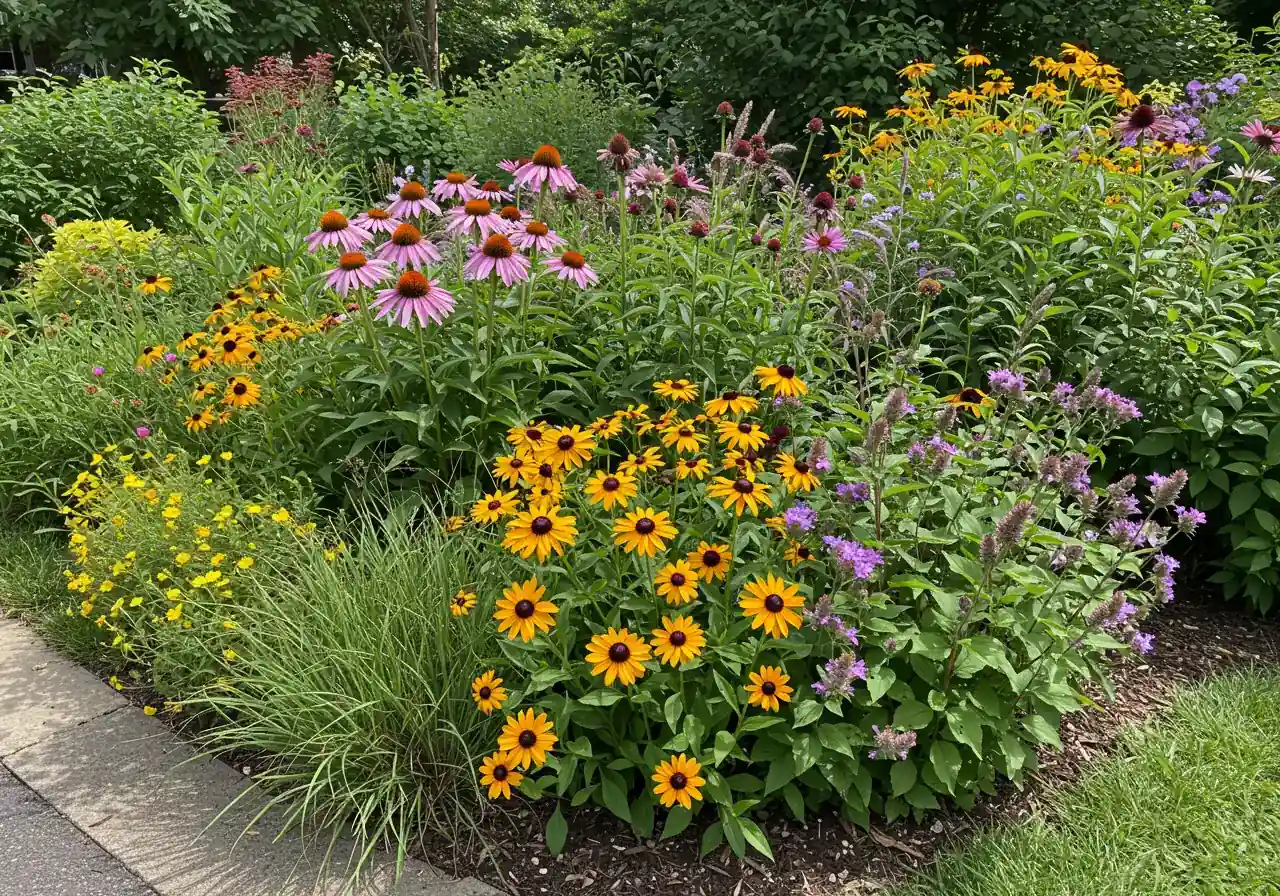
Alright, feeling inspired to bring some local botanical superstars into your Kenmore garden? Fantastic! It's easier than you might think to get started. You don't need a degree in botany or a huge budget – just a little bit of planning and some enthusiasm. Let's break it down into simple steps to turn that native plant dream into reality.
Step 1: Play Detective in Your Own Yard (Site Assessment)
First things first, get to know the spot you want to plant. Grab a coffee, wander outside, and observe:
- Sunlight: Does the area bake in full sun all day? Get only morning sun (part shade)? Or is it mostly shady? Be honest – wishful thinking won't help the plants!
- Water: Does rainwater pool there after a storm, or does it dry out super fast? Is it generally average?
- Soil: Roughly, what's the soil like? Is it heavy clay that gets sticky when wet? Or sandy and drains quickly? Knowing this helps pick plants that will feel right at home. Our material selection process considers these factors.
Step 2: Choose Your Native All-Stars (Plant Selection)
Now for the fun part! Based on what you discovered in Step 1, start looking for native plants that *like* those conditions.
- Matchmaker: Sunny, dry spot? Think Little Bluestem grass, Black-Eyed Susans, or Pearly Everlasting. Shady and moist? Wild Geranium, Foamflower, or ferns might be happy there.
- Start Small: Don't feel like you need to overhaul the entire yard at once! Pick one area – maybe replace a struggling patch of lawn or create a small border garden. Success in one spot builds confidence!
- Think Layers: Mix different heights and textures – maybe some taller grasses, some mid-size flowering plants, and some low groundcover.
Step 3: Go Shopping! (Sourcing Your Plants)
Where you get your plants matters.
- Local Nurseries: Seek out reputable garden centres, especially those known for carrying native species. Driving a little towards communities like Russell or Winchester might uncover nurseries with fantastic local selections grown for our climate.
- Ask Questions: Nursery staff are usually plant nerds (in the best way!) and can offer great advice.
- Important: Never dig plants from natural areas like parks or conservation lands. It harms the ecosystem and the plants rarely survive the transplant.
- Prep Work: If your chosen spot needs significant clearing first – maybe removing old, stubborn shrubs or a large section of turf – getting professional help can be a lifesaver. An Ottawa property cleanup service can efficiently prepare your site, making planting much easier. We also offer city property cleanup service options.
Step 4: Get Your Hands Dirty (Planting & Initial Care)
You've got your plants, your spot is ready – time to plant!
- Dig In: Dig a hole roughly twice as wide as the plant's pot, but only as deep as the pot. You want the base of the plant stem to be level with the surrounding ground.
- Settle In: Gently remove the plant from its pot, loosen any circling roots if needed, and place it in the hole. Backfill with the soil you dug out, pressing gently to remove air pockets.
- Water Well: Give your new plant a good, deep drink right after planting.
- Mulch Magic: Add a 2-3 inch layer of natural mulch (like shredded bark or pine needles) around the plant, but don't pile it against the stem. Mulch helps hold moisture, suppress weeds, and keep soil temperature even.
- First Year Care: Even drought-tolerant natives need regular watering during their first growing season to establish strong roots. Check them every few days, especially during hot, dry spells. A general tidy-up before you start digging can also make a world of difference; sometimes a straightforward city yard cleanup service is perfect for getting a clean slate.
That's it! You're on your way to creating a beautiful, lower-maintenance, eco-friendly garden space. Remember, gardening is a journey. Observe how your plants do, learn as you go, and enjoy the process! If you have specific questions about transforming your yard and decide to reach out to us, we respect your information – feel free to review Our Privacy Policy anytime. Taking the first step is awesome, and getting expert advice can lead you to helpful next steps, perhaps even landing you on our helpful resources thank you page with more tips! Happy planting!
Highlight Box: Native Plant Power Tips!
Ready to unleash the power of native plants in your Ottawa garden but want the quick-start guide? We hear you! Think of these as your cheat sheet to success. Going native is easier than you think, and *way* more rewarding.
- Start Small, Win Big: Feeling overwhelmed? Don't rip everything out! Pick just *one* spot in your yard – maybe that tricky, sun-baked patch near the mailbox in Greely where nothing seems happy, or a corner that needs some life. Clearing out old weeds or struggling turf is a perfect job to get help with; consider an expert Ottawa yard cleanup service to create a clean slate. Pop in a few easy-care natives like Black-Eyed Susans or Wild Bergamot. Instant upgrade, minimal stress!
- Water Wisely – Especially Year One: Remember, "low-water" doesn't mean "no-water" right away! Your new native buddies need regular drinks during their first growing season to establish strong roots. Think of it like helping them settle into their new home. Ensuring your garden bed is well-prepped, perhaps as part of a detailed Marionville garden clean up service if that's your neighbourhood, can also make a difference in how well the soil holds that initial moisture.
- Play Matchmaker (Plant Edition!): This is *key*! Put sun-loving plants in sunny spots and shade-tolerant plants where it's shady. Match plants to your soil type (clay vs. sandy) and moisture levels (dry vs. damp). Trying to force a swamp-loving plant into a dry, sandy corner is like trying to teach a cat to fetch your slippers – probably not going to end well! Read plant tags carefully or ask nursery experts.
- Think Beyond Just Blooms: Native plants offer amazing variety! Don't forget about native grasses (like Little Bluestem) for texture and winter interest, ferns (like Ostrich Fern) for shady spots, or compact shrubs (like Bush Honeysuckle - *Diervilla lonicera*, not the invasive kind!) for structure. Sometimes making room for these involves removing old, overgrown specimens – a task that might fit into a broader Marionville property cleanup service if you're doing a larger overhaul.
- Patience is a Virtue (Especially in Gardening): Native plants often follow the "sleep, creep, leap" pattern. Year 1, they might look small ('sleep' - growing roots). Year 2, they spread a bit ('creep'). Year 3, they really take off ('leap')! Give them time to get established before expecting a massive show. Trust the process! Understanding how plants grow and establish is part of creating successful landscapes – you can learn more about our philosophy and experience on the Clean Yards About Us page.
FAQs: Your Ottawa Native Plant Questions Answered
Got questions about bringing Ottawa's botanical heritage into your own backyard? You're not alone! Here are answers to some common queries we hear from folks around Kenmore, Nepean, and beyond.
Think again! While some natives have a more natural look, many are absolutely gorgeous garden stars – think vibrant Purple Coneflower, elegant Foamflower, or sturdy Serviceberry shrubs. It’s all about choosing the right plants for your preferred style. They bring beauty *and* benefit local wildlife, unlike those pesky garden invaders. A tidy look can be maintained with services like our city garden clean up service.
You bet! Many Ottawa natives evolved in exactly this type of soil. Species like Swamp Milkweed, Canada Wild Rye, or Cup Plant are quite tolerant of clay. Amending the soil slightly when planting helps, but choosing natives adapted to clay makes life much easier than trying to force non-native plants to cope. Good initial material selection for landscaping, like adding quality compost, gives any plant a boost.
Excellent question! Seek out reputable local nurseries that specialize in native species – they often have knowledgeable staff. Avoid generic plants from big box stores unless clearly labelled as native *to our specific region*. Some conservation groups or horticultural societies also hold annual native plant sales. Doing a little homework ensures you get authentic local flora! Check out resources like the Fletcher Wildlife Garden or the Rideau Valley Conservation Authority's native plant database.
Native plants attract beneficial insects like bees and butterflies, which is fantastic for your garden's health! While any dense planting can offer habitat, a diverse native garden often supports predators (birds, beneficial insects) that help control pest populations naturally. Keeping pathways clear and avoiding dense, tall grasses right next to patios minimizes tick concerns. It's often a healthier balance than needing constant intervention like traditional lawn care demands.
Good news – most native plants are incredibly tough and adapted to our winters! No need for wrapping them in burlap. For tricky spots near salted driveways or roads, choose salt-tolerant heroes like Switchgrass, Chokecherry, or Sand Cherry. A good spring clean-up to remove any winter debris or salt residue helps too; sometimes a thorough service like a Metcalf property cleanup can tackle winter's leftovers effectively.
Absolutely! Ottawa's woodlands are full of beautiful shade-tolerant natives. Consider options like Large-leaved Aster, Wild Geranium, Canada Anemone, or various native ferns. They bring life and interest to those dimmer corners of the yard where sun-lovers struggle. Keeping shade gardens tidy with a regular city garden maintenance service can help these gems shine.
Conclusion: Grow Beautifully, Save Effortlessly in Kenmore
So there you have it, Kenmore neighbours! Choosing native plants isn't just some trendy eco-thing; it’s plain *smart* gardening. It means less time battling the sprinkler and more time enjoying our beautiful Ottawa region, whether you're relaxing near the Rideau in Kars or enjoying life out towards Embrun. These local plant heroes save water, cut down your chore list (less feeding, less fuss!), and create lovely, lively spaces for birds and bees. Imagine a gorgeous yard that practically takes care of itself, leaving you more time for, well, anything else!
Even easy-care native gardens shine with neat borders; professional mulching and edging services can add that perfect polished touch. Sometimes a good tidy-up sets the stage for your new plantings, maybe using a helpful city garden clean up service before you dig in. If you're reclaiming a larger area for your native plant haven, perhaps dealing with overgrown sections, a thorough city property cleanup service can handle the heavy lifting and prepare the ground.
Ready to grow beautifully and save effortlessly right here in Kenmore? We hope this guide has sparked some ideas! If you're thinking about making the switch and want professional input, we'd love to hear your plans – you can easily share your thoughts and project details via our simple estimate feedback form. Go native, kick back, and enjoy a stunning, lower-maintenance landscape!
Ready to Transform Your Kenmore Landscape?
Okay, Kenmore neighbours, feeling fired up about giving your landscape a fantastic, *easier-to-care-for* makeover with native plants? Maybe you're picturing vibrant wildflowers instead of that stubborn patch of lawn near the fence, or dreaming of watching butterflies flit around your new garden bed while you sip your morning coffee. You’ve seen the benefits – less watering, less weeding, more natural beauty, and a helping hand for our local Ottawa environment. Awesome!
But wait, where do you actually *start*? Sometimes the biggest hurdle is just figuring out the first step, right? Maybe you love the idea but aren't quite sure which native plants will thrive in that sunny spot versus the shady corner, or perhaps the thought of digging up old, tired landscaping feels like a bigger project than you want to tackle alone. Don't let the "how" stop you from getting the "wow"! Transforming your yard, whether it's adding a small native garden bed or planning a larger overhaul, doesn't have to be a solo mission (or a weekend-long headache!).
That's where we come in. Think of us as your friendly neighbourhood landscape helpers, ready to lend a hand (or a shovel!) right here in Kenmore and surrounding areas like Vernon or Metcalfe. We specialize in creating beautiful, practical outdoor spaces and can help with:
- Dreaming it up: Need help planning? We offer creative garden design ideas featuring beautiful, hardy native plants perfectly suited for our Ottawa climate and your specific yard conditions.
- Clearing the decks: Ready for a fresh start? Our efficient yard cleanup services (like our Kenmore yard cleanup service) can remove old plantings, unwanted turf, or general clutter to prepare your space.
- Making it real: Let us handle the digging! We provide professional planting and garden installation, ensuring your new native beauties get settled in properly for long-term success.
- Keeping it lovely: Want a gorgeous garden without all the upkeep? We offer ongoing garden maintenance services to keep your new landscape thriving season after season.
Ready to ditch the high-maintenance hassles and embrace a stunning, sustainable yard that gives you more time to relax? Let's make that vision a reality! Here’s how you can easily take the next step:
- Get a Personalized Quote: Curious about costs and specific ideas tailored to *your* Kenmore property? Request your free, no-obligation estimate today! Visit us online at https://cleanyards.ca/contact-us/ and tell us a bit about your landscaping goals.
- Chat With Our Green Thumbs: Have questions or just want to talk through some possibilities for your space? Give our friendly team a call! We're happy to discuss your landscaping needs and how native plants can fit in. Reach us directly via our Contact Us page.
- Explore Ideas & Services: Want to see examples of landscape transformations or learn more about how we help Ottawa homeowners? Browse our services and gallery online.
Let's work together to create an outdoor space you absolutely love – one that’s beautiful, easier to manage, and perfect for enjoying those lovely Ottawa seasons right here in Kenmore.
